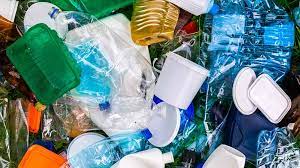
Sustainable Solutions: The Role of HDPE Recycling in Waste Management
HDPE is a high-density Polyethylene (HDPE) is one of the most commonly utilized plastics, and is known for its strength, durability, and versatility. It’s found in everything from milk jugs and detergent bottles, to pipes and plastic bags. As awareness of environmental issues increases, recycling HDPE has become increasingly important. Here’s everything you should know about HDPE Recycling.
What is HDPE?
Recycle HDPE is a form of thermoplastic derived from petroleum. It is distinguished by its high strength-to-density ratio, making it perfect for products that have to withstand wear and tear. HDPE is also abrasive to impacts and can withstand diverse environmental conditions. This makes it a popular material in a variety of applications.
Why Recycle HDPE?
Recycling HDPE is crucial for several reasons. First, it decreases the environmental impact of plastic waste, which could be a long time to decay in landfills. Recycling HDPE helps conserve the natural resources by reusing materials instead of obtaining fresh raw materials. In addition, recycling requires less energy compared to producing new HDPE and results in lower greenhouse gas emissions.
How is HDPE Recycled?
The process of recycling HDPE includes a number of key steps:
Sorting and Collection: HDPE items are collected from recycling bins, then sorted in a facility to segregate them from other kinds of plastics and other contaminants.
Cleaning: The sorted HDPE is washed to remove any residues, labels, or other impurities that might impact the quality of the recycled material.
Shredding: The cleaned HDPE is then broken down into small flakes. This allows it to be processed and melt in the next step.
Melting and Extrusion: The HDPE flakes are melted and made into pellets using the extrusion procedure. The pellets are the primary material that is used in the production of new HDPE products.
Manufacturing Recycling: The reclaimed HDPE pellets are used to make various new products, such as new bottles, pipes, as well as plastic lumber.
Challenges and Considerations
Despite the benefits, HDPE recycling faces challenges. Contamination with other materials can affect the recycling process, making the proper sorting and cleaning necessary. Furthermore, recycling demand for HDPE products should be high enough to ensure that the recycled material is able to be sold. The efforts to raise awareness of consumers and to improve recycling infrastructure are crucial to overcoming these challenges.
Conclusion
HDPE recycling is an essential element of sustainable waste management and conservation of the environment. By understanding and participating in the recycling process consumers can contribute to reducing the amount of plastic waste, preserving resources, and reducing carbon emissions. As technology and practice progress in the field, the efficiency and effectiveness of HDPE recycling are likely to improve, paving the way for the future to be more sustainable.
Proudly powered by WordPress. Theme by Infigo Software.